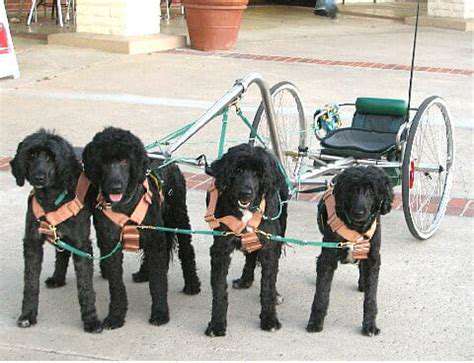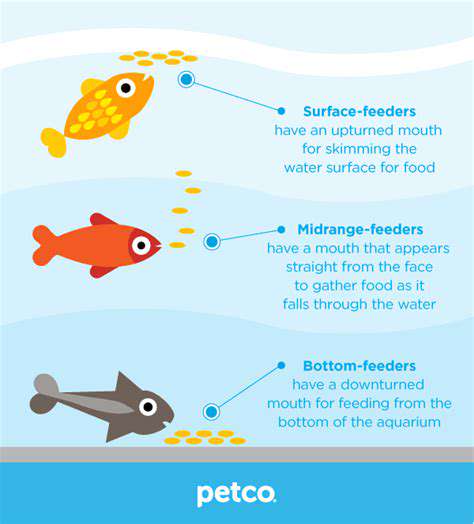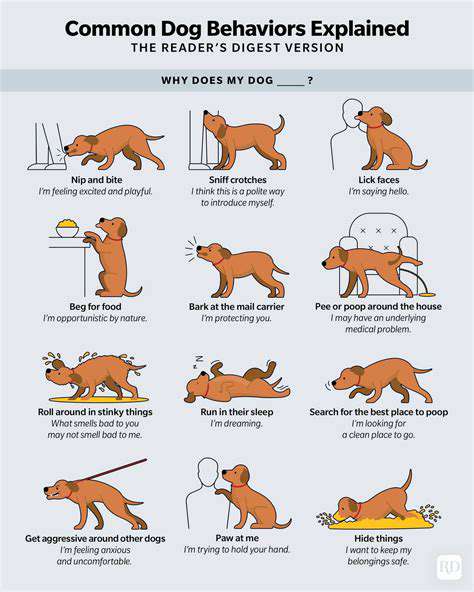How to Leash Train Your Dog Effectively
Addressing Common Leash Training Challenges: Pulling and Distractions

Understanding Leash Reactivity
Leash reactivity in dogs is a common issue, often stemming from a lack of understanding of the dog's body language and signals. It's crucial to recognize that a dog pulling on the leash isn't inherently malicious; it's often a response to stimuli, whether it's the sights, sounds, or smells around them. Understanding the underlying cause of the reactivity is the first step to effective training. Many dogs are simply overwhelmed by their environment and respond with pulling or other behaviors as a way to manage the stress.
Recognizing these triggers and creating a safe, controlled environment is key to addressing the root cause of the problem. This involves careful observation and a willingness to modify the dog's environment to minimize those triggers. It also means understanding that some dogs may require more time and patience than others to adjust to leash training and overcome their reactivity.
Identifying and Avoiding Triggers
A critical aspect of leash training is identifying the specific stimuli that provoke your dog's reactive behavior. Are they reacting to other dogs, people, or specific sights and sounds? Careful observation is essential, and a detailed log can be valuable in pinpointing these triggers. Once you've identified them, you can work on desensitizing your dog to these triggers gradually and in a controlled manner.
Avoiding those triggers in the initial stages of training is crucial for the dog's comfort and your safety. This might involve altering your walks, choosing quieter routes, or even temporarily avoiding areas with high concentrations of potential triggers.
Positive Reinforcement Techniques
Positive reinforcement is a cornerstone of effective leash training. Instead of punishment, focus on rewarding calm and appropriate behavior. This involves rewarding your dog for maintaining loose leash control, walking calmly by your side, and not reacting to triggers. Small, frequent rewards, such as treats, praise, or toys, are highly effective in motivating the dog to repeat desired behaviors.
Consistency is paramount. Using the same positive reinforcement strategies consistently helps the dog learn the expected behavior and associate it with reward. This strengthens the bond between you and your dog and fosters a positive learning experience.
Building a Strong Foundation
Before introducing leash training, ensure your dog has a solid foundation in basic obedience commands, such as sit, stay, come, and down. These commands are essential for maintaining control during walks and ensuring your dog understands your cues. A dog that understands and responds to these commands will be far more receptive to leash training and will be better equipped to manage distractions.
Building a positive association with the leash is also crucial. This can be achieved by associating the leash with positive experiences, like walks in familiar, low-stress environments, or by using the leash for rewarding activities such as playing fetch or going to a favorite park.
Gradual Exposure and Desensitization
Gradually expose your dog to triggers in a controlled environment. Start with low-intensity encounters, and gradually increase the intensity as your dog becomes more comfortable. This gradual approach helps the dog build tolerance and confidence in managing their reactions to triggers.
Consistent, controlled exposure is key; avoid overwhelming your dog by introducing too many triggers at once. Remember to always prioritize your dog's comfort and well-being during this process.
Patience and Consistency
Leash training takes time and patience. Consistency in your training methods is essential for your dog to understand and follow your instructions. Remember that every dog learns at their own pace. Be prepared for setbacks and celebrate every small victory along the way. Positive reinforcement, consistent training, and gradual exposure are the cornerstones of successful leash training.
Don't get discouraged if progress seems slow; continue to work with your dog, and you will see improvements over time. Professional guidance can be helpful for complex cases of leash reactivity, and seeking expert advice is a wise choice.
Mastering Advanced Leash Skills: Off-Leash Control and Socialization
Off-Leash Control: Building a Solid Foundation
Mastering off-leash control is a crucial component of responsible dog ownership, allowing for greater freedom and enriching experiences. It's not just about preventing your dog from running away; it's about fostering a deep connection and understanding between you and your canine companion. This begins with consistent, positive reinforcement training on a leash, gradually introducing controlled environments where your dog can explore while remaining attentive to your cues.
A well-trained dog understands the importance of your commands, and this understanding is built through repetition and positive reinforcement. Start with simple recall exercises in a safe, enclosed space, rewarding your dog with praise, treats, and affection when they respond correctly. Gradually increase the distance and distractions as your dog demonstrates proficiency.
Socialization: The Key to Confidence
Socialization plays a vital role in shaping a dog's personality and behavior. Exposing your dog to various people, animals, and environments from a young age fosters confidence and ensures they develop into well-adjusted companions. Positive experiences during socialization build a strong foundation for future interactions.
Careful and controlled introductions are key. Start with short, supervised interactions in quiet settings, gradually increasing the complexity and intensity of the encounters as your dog demonstrates comfort and confidence. Always prioritize your dog's well-being and safety during socialization periods.
Advanced Recall Techniques: Beyond the Basics
Once your dog has mastered basic recall, you can introduce more challenging scenarios to enhance their responsiveness. Using high-value treats, toys, or praise as rewards can greatly improve the effectiveness of your recall commands. Varying your commands, using different tones of voice, and incorporating hand signals can further enhance their understanding.
Training in distracting environments is critical. Gradually introduce more distractions, such as other dogs, people, and noises, to challenge your dog's focus and commitment to returning to you. Practice in different locations and situations to ensure your dog remains responsive and attentive, even in high-stimulus environments.
Handling Distractions: Maintaining Focus
Distractions are inevitable when training a dog, especially when working towards off-leash control and socialization. Identifying and managing these distractions is a key aspect of advanced training. Understanding your dog's triggers and sensitivities will allow you to create training scenarios that are challenging but not overwhelming.
Consistent training, patience, and positive reinforcement are vital. By using a combination of techniques, you can help your dog overcome distractions and maintain focus on your commands, which is crucial for off-leash safety and enjoyment.
Understanding Canine Body Language: Reading Your Dog's Signals
Comprehending canine body language is essential for effective communication and training. Learning to interpret your dog's postures, vocalizations, and facial expressions can help you anticipate their needs and adjust your training accordingly. This understanding is invaluable for preventing potential conflicts and ensuring a harmonious relationship with your dog.
Safety First: Preparing for Off-Leash Adventures
Before venturing off-leash, ensure your dog is adequately trained and prepared. Familiarize them with the environment, anticipate potential hazards, and always prioritize their safety. Having a plan in place for unexpected situations, such as a sudden fright or a change in behavior, can minimize risks and ensure a positive experience for both you and your dog.
Always maintain a safe distance from other dogs or people, especially during off-leash activities. Remember, a well-trained dog is a happy dog, and a happy dog is a safe dog.
Read more about How to Leash Train Your Dog Effectively
Hot Recommendations
- Review: [Specific Brand] Small Animal Cage
- Why Rescuing Pets Saves Lives
- Best Pet First Aid Kits [What to Include]
- How to Help Stray Animals in Your Community
- Guide to Adopting a Pet When You Have Kids
- Top Reptile Heat Lamps
- Heartwarming Rescue Stories That Will Inspire You
- Review: [Specific Brand] Bird Cage
- Best Aquarium Filters [2025 Review]
- Review: [Specific Brand] Smart Litter Box





![Review: [Specific Brand] Smart Pet Door](/static/images/33/2025-05/EaseofInstallationandSetup.jpg)




![Review: [Specific Brand] Reptile Food](/static/images/33/2025-05/EaseofUseandFeedingExperience.jpg)